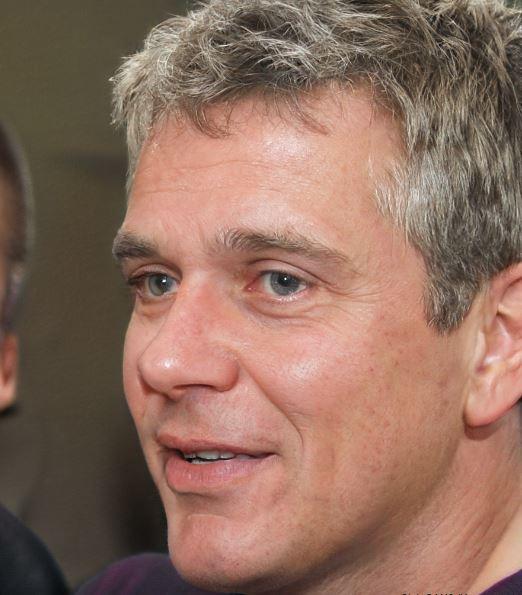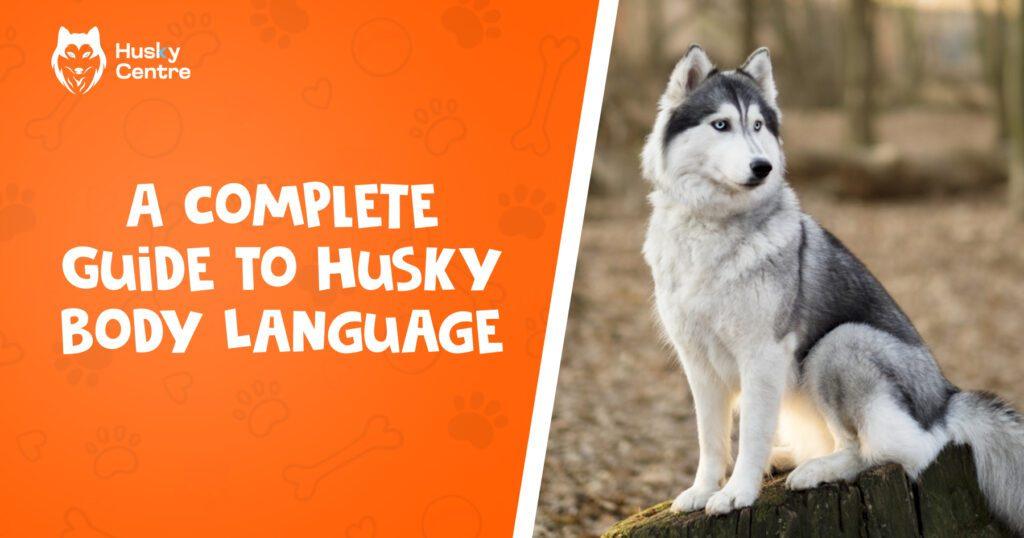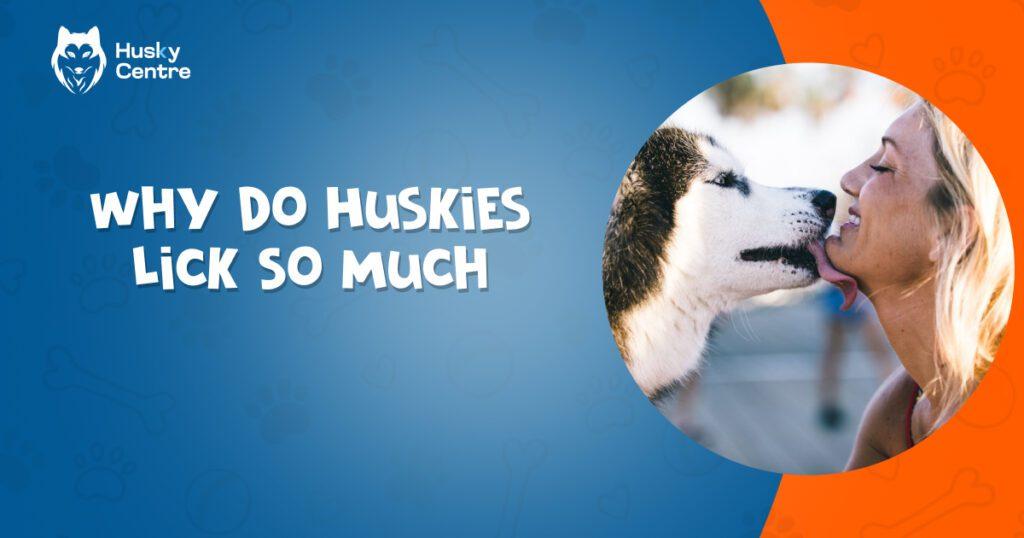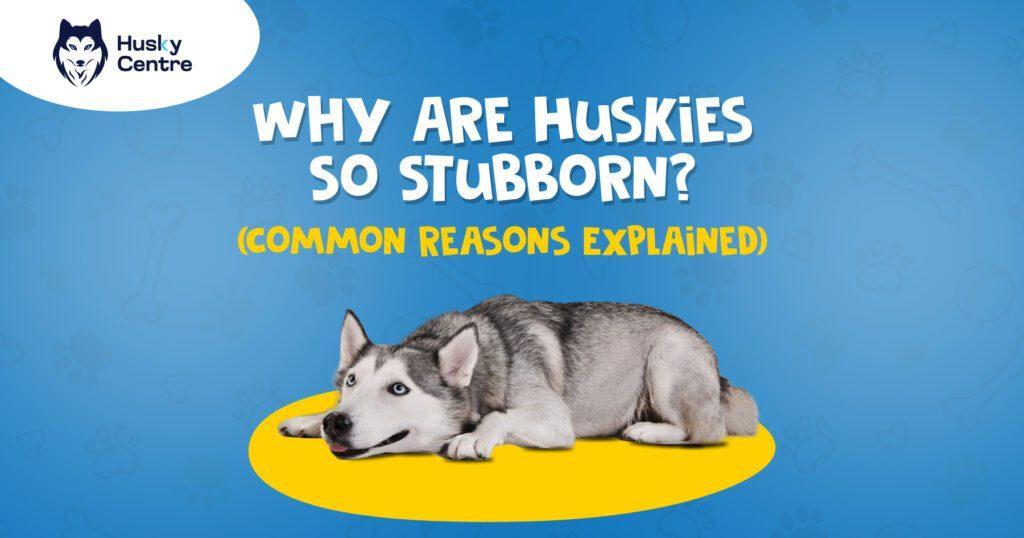Husky body language is a significant indicator of their emotions and intentions, which can be understood through their facial expressions, tail movements, and posture. Huskies use their body language to communicate their feelings, assert dominance, show submission, and express their overall mood and behavior.
Husky talk got you lost in translation? No more! This guide deciphers their unique body language: tail wags, playful grins, even the “husky howl”! ️ Build a deeper bond, unlock hidden messages, and become your pup’s best translator. Unleash the secrets of your expressive husky today!
Understanding The Basics Of Husky Communication
As a proud husky owner, it is essential to understand the unique communication style of these magnificent creatures. Huskies are known for their expressive body language and distinct vocalizations, which they rely on to convey their emotions and communicate with both fellow huskies and humans. Learning to decipher their signals can strengthen the bond between you and your husky, allowing for better understanding and a deeper connection. In this blog post, we will delve into the fascinating world of husky communication, exploring how they interact with each other and what their different vocalizations and body language mean. So, let’s jump right in!
How Do Huskies Communicate With Each Other?
Huskies are social animals who thrive in packs, and communication is crucial for their survival and well-being. While huskies do use vocalizations to communicate, their primary form of expression is through body language.
Here are some common husky body language signals:
- Confident Stance: A confident husky stands tall with their head held high and ears erect. Their body is relaxed, and their tail is positioned horizontally.
- Submissive Posture: When feeling submissive, a husky may lower its body, tuck its tail between its legs, and even expose its stomach.
- Playful Demeanor: If a husky is feeling playful, they may exhibit a bouncy trot, wagging tail, and forward-leaning stance.
- Aggressive Display: Aggression in huskies is marked by erect ears, a raised hackle (fur along the back), bared teeth, and a forward-leaning posture.
Unique Vocalizations Of Huskies And What They Mean
Huskies are well-known for their wide range of vocalizations that go beyond the usual barks and howls. These vocalizations serve as another means for huskies to communicate their needs and emotions.
Here are some unique husky vocalizations and what they typically mean:
- Howling: One of the most iconic husky vocalizations, howling is usually a form of communication over long distances. It can signify loneliness, calling for attention, or alerting the pack to potential dangers.
- Talking: Huskies are known for their “talking” or “wooing” sounds, which are a mix of moans, groans, and murmurs. This vocalization is often used to initiate play, express excitement, or express their desire for something.
- Growling: While growling is commonly associated with aggression, huskies also growl to express discontent or protest. It can occur when they are annoyed, during play, or when they are trying to communicate that something is wrong.
- Whining: Whining is a versatile vocalization that huskies use for various reasons. It can indicate excitement, anxiety, discomfort, frustration, or even as a way of seeking attention or expressing their needs.
Understanding these vocalizations is a key part of interpreting your husky’s communication and addressing their emotional needs.
In conclusion, huskies have a distinct language of their own, comprising body language and unique vocalizations. By familiarizing yourself with these signals, you can better understand what your husky is trying to convey and respond accordingly. Remember to pay attention to their body posture, tail position, and vocal cues in order to create a stronger bond with your beloved furry friend.
Decoding Tail Wagging And Positioning
Understanding a Husky’s body language is essential for any owner or enthusiast. One of the key aspects to focus on is their tail wagging and positioning. A husky’s tail can communicate a variety of emotions and intentions.
By learning to decode their tail language, you can enhance your bond with your furry companion and respond to their needs more effectively. In this article, we will discuss the different meanings behind a Husky’s wagging tail and the significance of tail positioning in reflecting their emotions.
The Different Meanings Behind A Husky’s Wagging Tail
The wagging of a Husky’s tail can convey different messages depending on the context and accompanying body language. To accurately interpret your Husky’s intentions, pay attention to the following:
- Wide, relaxed wag: A wide, relaxed tail wag usually indicates a happy and friendly Husky. This wag is accompanied by a relaxed body posture and may include a loose face and open mouth.
- Rapid wag with erect tail: A rapid wag with an erect tail often signifies high excitement or arousal. Your Husky might be thrilled about something or anticipating an action, like going for a walk or playing.
- Slow, low wag: A slow, low wag could mean that your Husky is feeling unsure or slightly anxious. It can be a signal that they need reassurance or that the situation requires caution.
The Significance Of Tail Positioning And How It Reflects Their Emotions
Aside from wagging, a Husky’s tail positioning plays a significant role in expressing their emotions. The position of their tail can provide valuable insights into how they are feeling. Here are some important tail positions to watch out for when interpreting your Husky’s body language:
| Tail Position | Meaning |
|---|---|
| Upright and stiff | When the tail is upright and stiff, it typically indicates alertness or even aggression. Your Husky might be on guard or perceiving a potential threat. |
| Tucked between the legs | A Husky with its tail tucked between its legs is displaying signs of fear or submission. They may be feeling anxious or intimidated in their current environment. |
| Curved or slightly raised | A curved or slightly raised tail suggests a relaxed and content state. Your Husky is likely comfortable and at ease in their surroundings. |
By paying attention to your Husky’s tail wagging and positioning, you can gain valuable insights into their emotional state. Remember to consider the overall context and other accompanying body language cues to ensure a more accurate interpretation. Understanding your Husky’s body language will help you nurture a strong and harmonious relationship with your beloved furry friend.
Unmasking Facial Expressions And Eye Contact
Huskies are known for their captivating body language, and understanding their facial expressions and eye contact can provide valuable insights into their thoughts and emotions. By decoding these nonverbal cues, you can develop a stronger bond with your husky and communicate more effectively.
Key Facial Expressions And What They Convey
When observing a husky’s face, several key facial expressions can reveal much about their current state of mind.
| Facial Expression | Meaning |
|---|---|
| Eyes wide open | Alertness or surprise |
| Raised eyebrows | Curiosity or confusion |
| Pulled back lips, showing teeth | Aggression or fear |
| Relaxed face with closed mouth | Contentment or relaxation |
Understanding these facial expressions can help you assess your husky’s emotional state and respond accordingly. For instance, if you notice raised eyebrows, it may indicate your husky’s curiosity or confusion, prompting you to provide clarity or engage in a stimulating activity.
The Importance Of Eye Contact In Husky Communication
Eye contact plays a crucial role in husky communication. By maintaining eye contact with your husky, you can establish trust, convey dominance, and strengthen your bond. Huskies use eye contact as a means of conveying their intentions and understanding yours.
When communicating with your husky, ensure you maintain direct eye contact while speaking to assert your leadership. However, it’s important to remember that excessive staring can be interpreted as a challenge or aggression, so make sure to strike a balance and be respectful.
Common Eye Expressions And Their Meanings
Huskies utilize various eye expressions to communicate their emotions and needs. Familiarizing yourself with these expressions can help you decode your husky’s messages more effectively.
- Soft, relaxed gaze: Indicates trust, contentment, and relaxation.
- Intense stare: Indicates alertness, focus, or a desire for attention.
- Half-mast eyes: Indicates submission or submission-seeking behavior.
- Avoiding eye contact: Usually signifies fear, anxiety, or discomfort.
By paying attention to your husky’s eye expressions, you can better understand their emotional state and respond accordingly, strengthening the bond between you.
Interpreting Ears, Posture, And Body Movements
Husky body language can be understood by interpreting their ears, posture, and body movements. By observing these cues, you can gain valuable insights into their emotions and intentions.
Understanding The Language Of Husky Ears
Husky dogs have a unique way of communicating their thoughts and emotions, and one of the most significant indicators of their mood is their ears. Being able to understand the language of Husky ears is crucial for any owner or enthusiast. Here are a few key points to keep in mind:
- Forward and erect: When a Husky’s ears are in an upright and forward position, it indicates attentiveness and curiosity. This typically happens when they are focusing on something interesting or trying to figure out a new situation.
- Backward and flattened: When a Husky’s ears are pressed back against their head, it suggests fear or submission. It is important to be gentle and calm in such instances to put your Husky at ease.
- One ear up, one ear down: This ear position often indicates a sense of playfulness or mild interest. Your Husky might be trying to gauge your reaction or preparing to engage in some fun activities.
How Posture Reveals A Husky’s Emotional State
Just like humans, Huskies express their emotions through their body posture. By paying attention to their posture, you can gain valuable insights into their emotional state:
- Tail position: A high and raised tail is a sign of confidence and happiness, while a tucked tail suggests fear or anxiety.
- Head position: A raised head indicates alertness and interest, whereas a lowered head can be a sign of submission.
- Body weight: If a Husky leans forward with their weight shifted onto their front legs, it typically suggests that they are ready for action. On the other hand, if they shift their weight backward, it may indicate fear or unease.
Interpreting Specific Body Movements And What They Signify
Huskies are known for their expressive body movements, and being able to interpret these movements can enhance your understanding of their needs and emotions. Here are some notable body movements and their meanings:
- Pawing: When a Husky paws at you or an object, it can indicate a desire for attention or play. Paying attention to their body language can help you determine the specific context.
- Jumping: A jumping Husky is often excited and eager to interact with you. It’s essential to redirect this energy into positive activities like playing fetch or going for a walk.
- Rolling over: When a Husky rolls onto their back, they are usually showing submission and trust. It’s crucial to handle these situations delicately and provide them with a calm and secure environment.
- Mouthing: Huskies have a strong inclination to mouth objects and even sometimes people. This behavior is usually a result of teething or playfulness. Providing appropriate chew toys can help redirect this behavior.
By understanding the language of Husky ears, analyzing their posture, and interpreting their body movements, you can better communicate and bond with your furry friend. Paying attention to these subtle cues will help you respond effectively to your Husky’s needs and strengthen your relationship with them.
Communicating With Your Husky Through Body Language
Learn to understand your Husky’s body language to effectively communicate with them. By observing their expressions and movements, you can decipher their needs, emotions, and intentions.
The Role Of Body Language In Building A Strong Bond With Your Husky
Building a strong bond with your Husky goes beyond verbal commands. Effective communication is key, and one of the most important ways to communicate with your furry friend is through body language.
Huskies are highly observant animals, and they rely heavily on non-verbal cues to understand and respond to their surroundings.
By learning and utilizing the nuances of Husky body language, you can deepen your understanding of your pet’s emotions, needs, and desires.
This understanding will not only strengthen your bond but also foster a sense of trust and companionship between you and your Husky.
Techniques To Communicate Effectively With Your Husky Using Body Language
When it comes to communicating with your Husky through body language, consistency and clarity are key. Here are some techniques to help you effectively convey your intentions and understand your Husky’s responses:
- Eye contact: Establish and maintain gentle eye contact with your Husky to convey trust and respect. Avoid staring forcefully, as this may be perceived as a threat. Instead, maintain a soft gaze to establish a connection.
- Posture: Stand tall and maintain an open and relaxed posture when interacting with your Husky. This will convey confidence and leadership, enhancing your Husky’s trust in you as their pack leader.
- Hand signals: Use consistent hand signals along with verbal commands to reinforce your communication. For example, raising your hand with an open palm can signal “stay,” while pointing can indicate a specific direction.
- Facial expressions: Your facial expressions can convey a wide range of emotions to your Husky. Smiling can indicate happiness and reassurance, while frowning or furrowing your eyebrows can express concern or displeasure.
- Space management: Give your Husky enough personal space, especially when meeting new people or animals. Allow them to approach and sniff at their own pace, as this will help them feel more comfortable and secure.
Training Tips For Understanding And Responding To Your Husky’s Body Language Signals
Understanding and responding to your Husky’s body language signals is essential for effective training. Here are some training tips to help you decipher and respond appropriately to your Husky’s non-verbal cues:
- Observe body postures: Pay close attention to your Husky’s body postures to gauge their emotions. A tucked tail may indicate fear or submission, while an erect tail suggests confidence or arousal. Interpret these cues to adjust your training approach accordingly.
- Recognize facial expressions: Huskies have expressive faces, and their facial expressions can provide valuable insights into their mood. Watch for signs of happiness, anxiety, or discomfort to understand how your Husky is feeling during training sessions.
- Respond promptly: When your Husky exhibits specific body language signals, respond promptly to reinforce positive behaviors or address any issues. This will help your Husky associate their actions with the consequences, enhancing their understanding and overall training progress.
- Stay calm and patient: Dogs, including Huskies, are highly perceptive to human emotions. It’s crucial to remain calm and patient during training sessions, as your Husky will mirror your energy. This will promote a positive learning environment and facilitate better communication.
- Seek professional guidance: If you are uncertain about your Husky’s body language or need assistance in training, consider seeking help from a professional dog trainer. They can provide expert guidance tailored to your Husky’s specific needs, ensuring optimal training outcomes.
Frequently Asked Questions For Husky Body Language
What Are The Common Signs Of A Happy Husky?
A happy Husky will have a relaxed body, wagging tail, bright eyes, and ears up. They might also exhibit playful behavior and engage in friendly interactions with people and other animals.
How Do Huskies Show Affection Towards Their Owners?
Huskies show affection by leaning against their owners, giving gentle nuzzles, and licking their hands or faces. They may also wag their tails, make eye contact, and exhibit contentment in the presence of their loved ones.
Why Do Huskies Howl?
Huskies howl as a form of communication. They do it to express their emotions, seek attention, announce their presence, or respond to certain sounds or stimuli. Howling is deeply ingrained in their genetic makeup and is a behavior inherited from their ancestors.
Does Huskies get stubborn anytime?
It may depends on their mood. But often they can while they cannot get food, toys or anything they want.
Conclusion
Understanding husky body language is crucial for any husky owner. By observing their facial expressions, tail movements, and overall posture, we can decipher their emotions and needs. Learning to interpret these signals not only helps in building a strong bond with our furry friends but also ensures their well-being.
Remember, effective communication goes beyond words, and by paying attention to their body language, we can provide them with the love and care they truly deserve. So, start observing your husky’s body language today and see how it strengthens your relationship with them.
Happy communicating!


Meet Jarred, the heart and soul behind HukyCentre. With a deep affection for furry friends, he pours his passion into every word he writes. His genuine love for dogs shines through in his engaging and informative content. As a dedicated dog enthusiast, Jarred’s goal is to share valuable insights and tips that resonate with fellow dog lovers. Join Jarred on the journey as he celebrates the joy and companionship that dogs bring into our lives.



